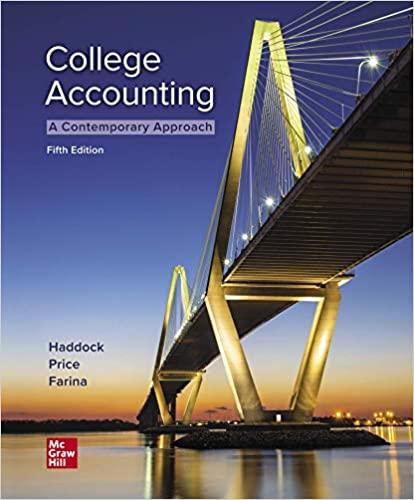Question
56.It is considered a very useful and easier way to estimate costs. It makes use of the experience and judgement of managers and accountants who
56.It is considered a very useful and easier way to estimate costs. It makes use of the experience and judgement of managers and accountants who are familiar with the company operations and the way costs react to changes in activity level. a. Account Analysis Method b. Industrial Engineering Method c. Conference Method d. High Low Method e. Regression Analysis Method f. Correlation Analysis
57.Under this method, costs functions are estimated based on the analysis and opinions about cost and their drivers obtained from various departments of an organization such as purchasing, process engineering, employee relations and so on. a. Account Analysis Method b. Industrial Engineering Method c. Conference Method d. High Low Method e. Regression Analysis Method f. Correlation Analysis
58.Estimates cost functions by analyzing the relationship between inputs and outputs in physical forms. a. Account Analysis Method b. Industrial Engineering Method c. Conference Method d. High Low Method e. Regression Analysis Method f. Correlation Analysis
59.In the process of estimating and controlling costs, management must evaluate whether or not the factor selected for estimating cost behavior is suitable for that purpose. a. Account Analysis Method b. Industrial Engineering Method c. Conference Method d. High Low Method e. Regression Analysis Method f. Correlation Analysis
60.These are expenses incurred but without a need of cash payment such as depreciation and provision for inventory obsolescence. a. Opportunity Cost b. Sunk Cost c. Variable Costs d. Fixed Costs e. Relevant Costs f. Non-cash Costs
61.Cost that has already been incurred and cannot be changed by any decision made now or in the future. Because it has no effect whatever the decisions will be by the management, sunk cost are simply ignored. a. Opportunity Cost b. Sunk Cost c. Variable Costs d. Fixed Costs e. Relevant Costs f. Non-cash Costs
62.Cost that varies in the total production output and it is directly proportional to the level of output. a. Opportunity Cost b. Sunk Cost c. Variable Costs d. Fixed Costs e. Relevant Costs f. Non-cash Costs
63.Potential benefit given up when one alternative is selected over another. a. Opportunity Cost b. Sunk Cost c. Variable Costs d. Fixed Costs e. Relevant Costs f. Non-cash Costs
64.A kind of cost that is constant regardless whether the company is producing or not. a. Opportunity Cost b. Sunk Cost c. Idle Time d. Fixed Costs e. Relevant Costs f. Decision
65.Cost useful in making decision (not yet recorded) a. Opportunity Cost b. Sunk Cost c. Idle Time d. Fixed Costs e. Relevant Costs f. Decision
66.Refers to the time in which employees are not productive but the times idle are being paid by the company. a. Overtime Premium b. Sunk Cost c. Idle Time d. Fixed Costs e. Relevant Costs f. Decision g. Mixed Cost
67.Additional premium is given for extra hour/s work by the employee in excess of the Normal Hours. It considered part of the manufacturing overhead and spread all over the produced units. a. Overtime Premium b. Sunk Cost c. Idle Time d. Fixed Costs e. Relevant Costs f. Decision
68.Involves choosing between alternatives, each alternative will have cost and benefit to be compared to other alternatives and the management will choose the most beneficial among the choices. a. Overtime Premium b. Sunk Cost c. Idle Time d. Fixed Costs e. Relevant Costs f. Decision
69.In a manufacturing company, managers are concerned with how many units to produce in a batch in addition to how many units (of raw material) to buy. The EOQ formula can be modified to calculate the appropriate number of units to manufacture in an economic production run (EPR). a. True b. False
70. It is a check that is crossed with two parallel lines, either across the whole check or through the top left-hand corner of the check. a. Traveler's Check b. Post-dated Check c. Manager's Check d. Crossed Check e. Cashier's Check f. Stale Check
Step by Step Solution
There are 3 Steps involved in it
Step: 1

Get Instant Access to Expert-Tailored Solutions
See step-by-step solutions with expert insights and AI powered tools for academic success
Step: 2

Step: 3

Ace Your Homework with AI
Get the answers you need in no time with our AI-driven, step-by-step assistance
Get Started


